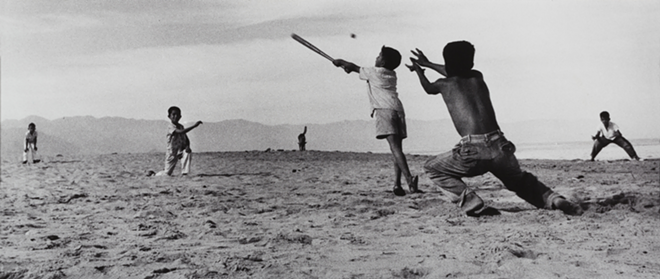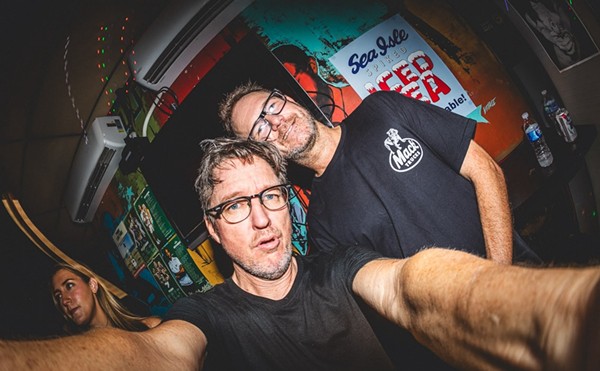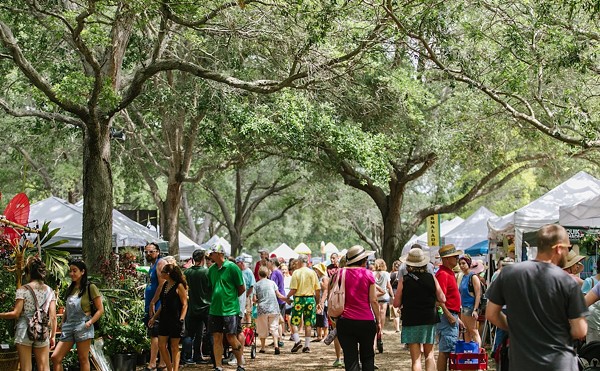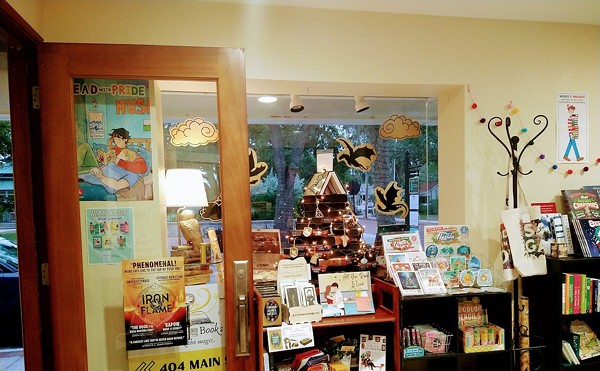
There's a photograph tucked away on the second floor of the Tampa Museum of Art that says a lot about the spirit of its maker, "el Maestro Mexicano" Manuel Carrillo. It's a wide-angle shot of a bunch of children playing baseball in a big sandy expanse. The chicken-legged batter is perfectly captured swatting at a high pitch, as his variously shirtless and shoeless compatriots look on.
It's a fine photograph, nicely composed and dynamic. But as I stared and stared, something seemed off about it. Kids playing ball: it wasn't quite remarkable enough to justify its placement in the exhibit. Finally I noticed the tiny detail that took this photograph and elevated it: the figure at shortstop wasn't a kid, but a dog. A wandering stray, placidly sniffing at something in the sand while the boys played their frenetic game all around him. It was the key to the image, it was the work of a true maestro. And I almost missed it.
Manuel Carrillo: Mi Querido Mexico (My Beloved Mexico) is full of little moments like this one. At his best, Carrillo was a photographer of subtlety and grace. He was, if such a thing is possible, a soft-spoken photographer: rarely bellowing his opinion or yelling at us to look here. Though Lord knows there is plenty here to look at. Carrillo was intimate with his beloved Mexico, and got some heart-melting, gut-slugging images out of the affair. We're privileged to see them.
Manuel Carrillo was born in Mexico City in 1906, and headed north of the border as a young man. After a series of jobs and pursuits across Los Estados Unidos he returned to his home country, and eased into a steady, sturdy 36-year career in a local train office. It was only on the very brink of 50 that Carrillo started getting sort of serious about his photography hobby. It turned out to be a good move: within a few years he had earned renown in Mexican photography circles, and his first international exhibit, in Chicago.
Carrillo said that his greatest regret was that he started his photographic career so late in life. But something tells me that Carrillo's images could only have been the work of a seasoned individual, a person who had lived well and broadly and still found something to savor in his homeland.
Even so, there are moments as his career advanced that Carrillo seemed to be playing to the grandstands. There's a portrait of a laborer type in a traditional broad-brimmed hat staring down the sun that looks like a posed study for a Diego Rivera mural — there's a stiff Social Realism vibe to it that must have thrilled Carrillo's viewers in '60s America, thirsting for a glimpse of the Mexican workers' noble plight. It's social commentary drained of all impact — please thank our friends at Bank of America for putting on the exhibit, folks! — and smooths a lot more feathers than it ruffles. (Especially compared to the fiery stuff down the hall in Complicated Beauty: Contemporary Cuban Art.)
But for every questionably sentimental shot, there are several real beauties. Carrillo must have been a master of roaming the streets of Mexico City like a shadow, easing up on people and easing away with the softest click of a shutter. That's how he ended up with images like the one of a mother and child, taken from an intimate angle that makes you ask how he got so close. It's the kind of magic that can only be wrought by a genuine man of the people, among his people. Like the museum's other extraordinary show Self-Taught Genius: Treasures from the American Folk Art Museum, it's art that doesn't stand aloof and comment on people's lives, but flows right out of that everyday human experience. With the odd dog thrown in.














